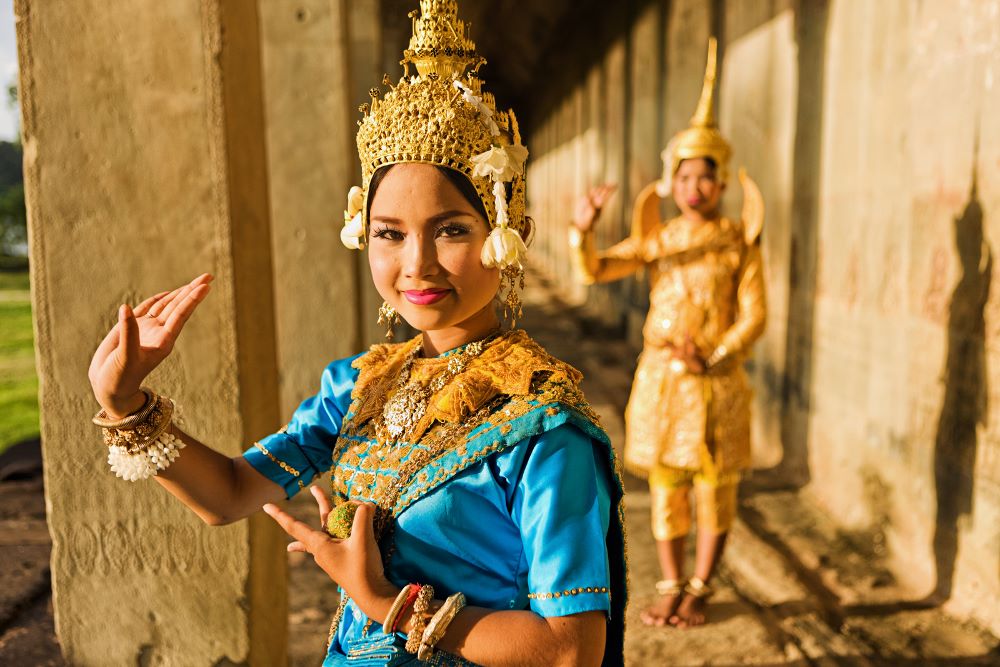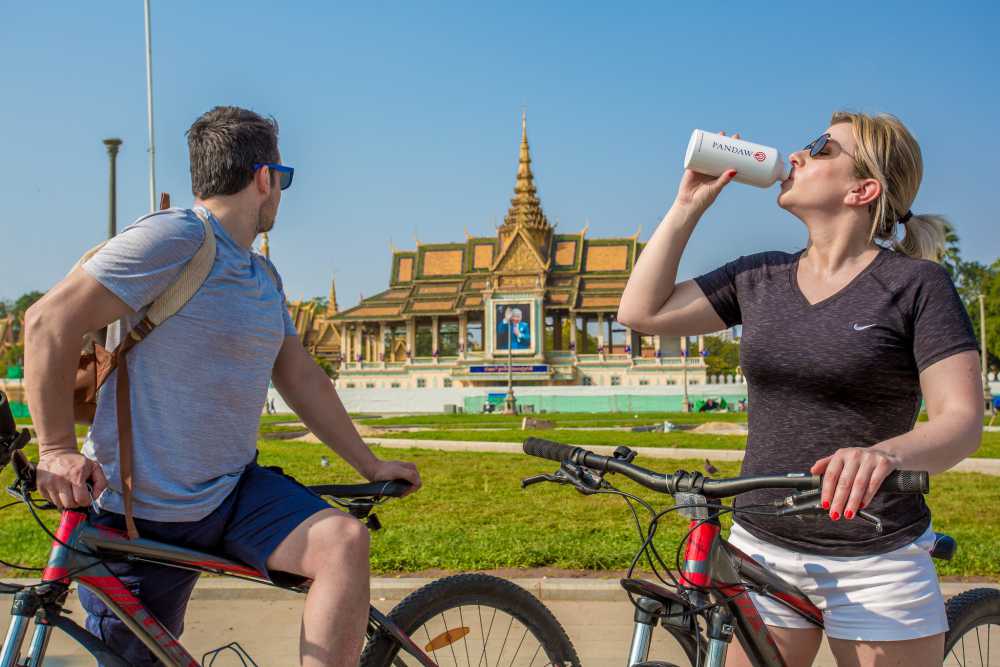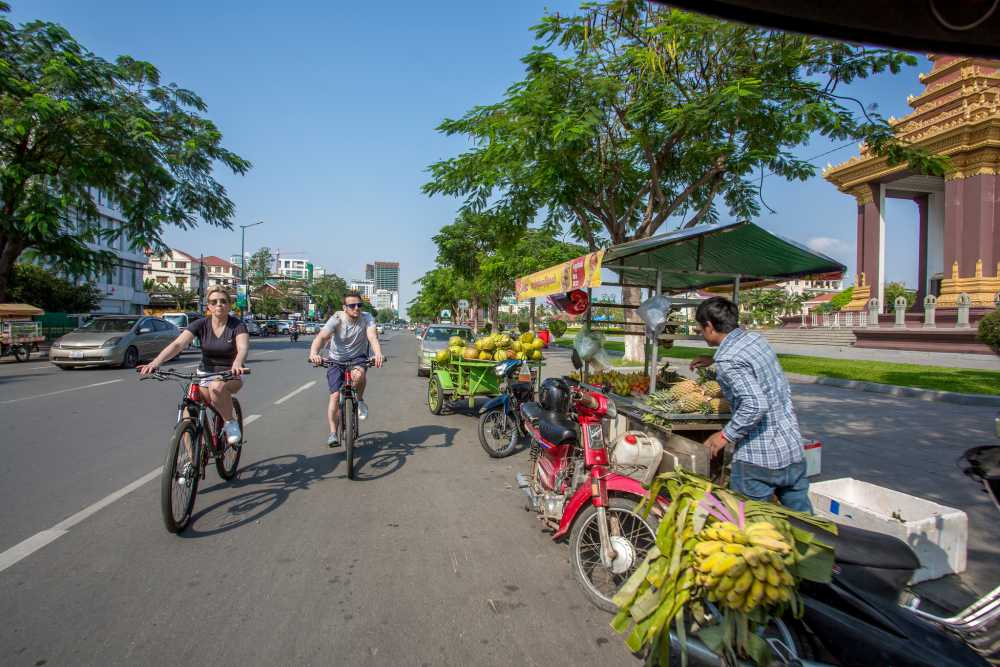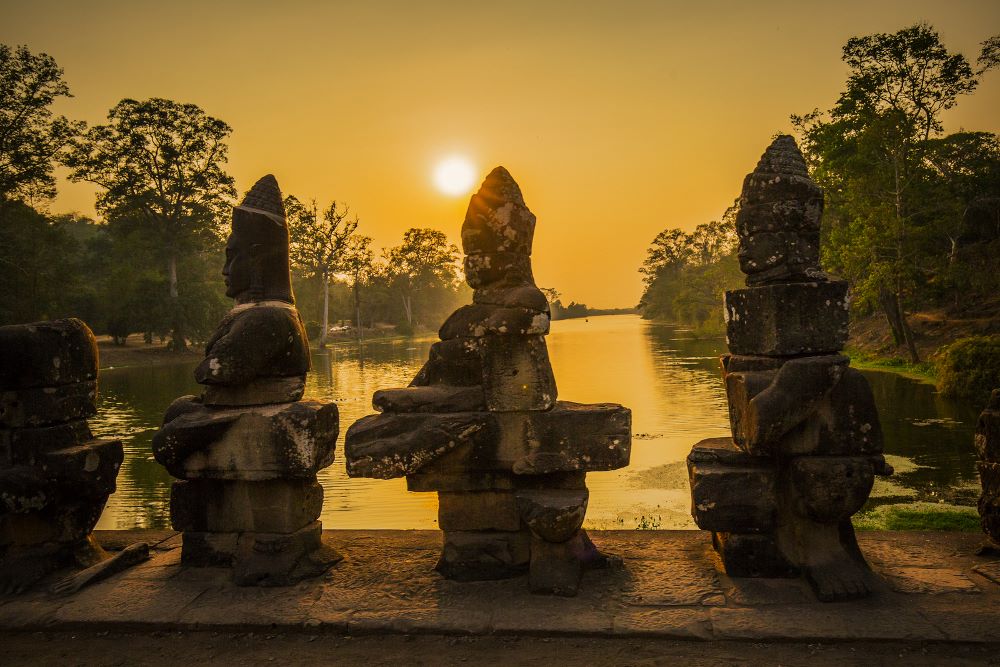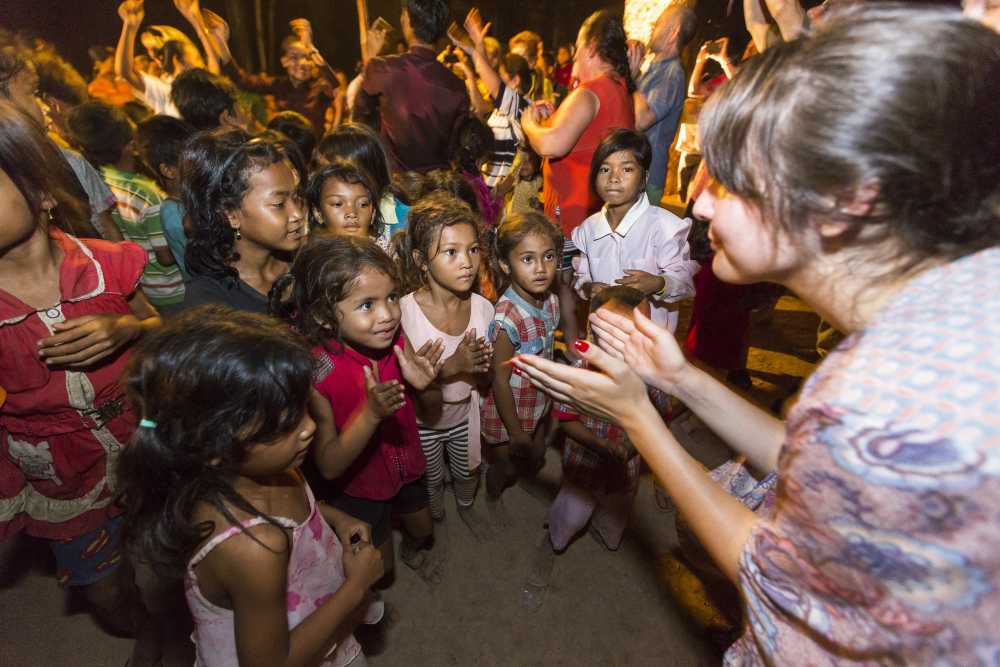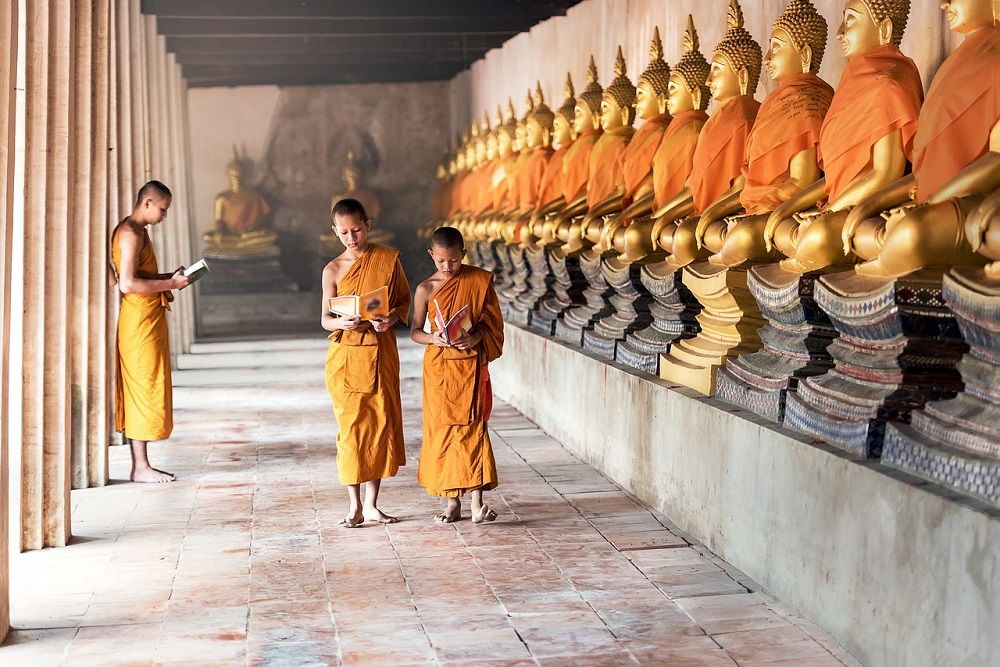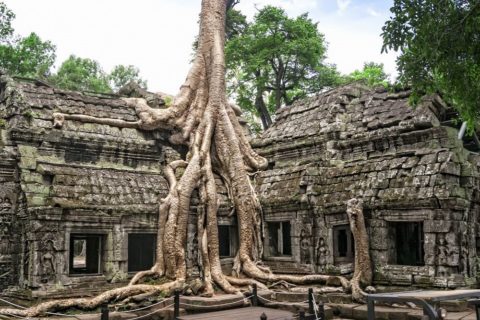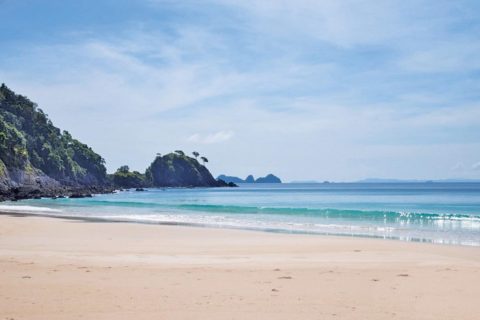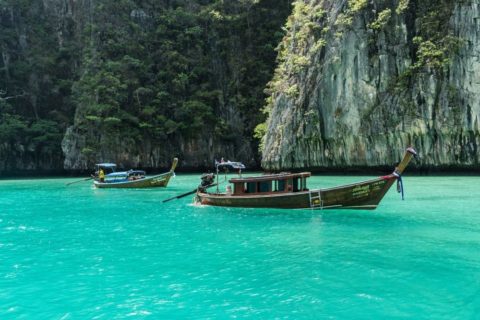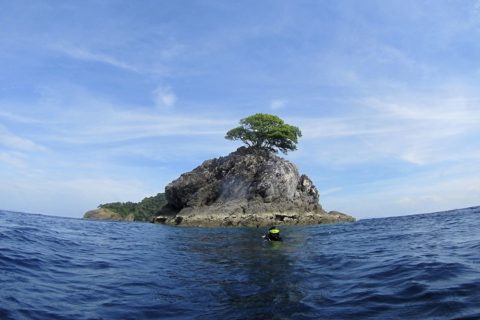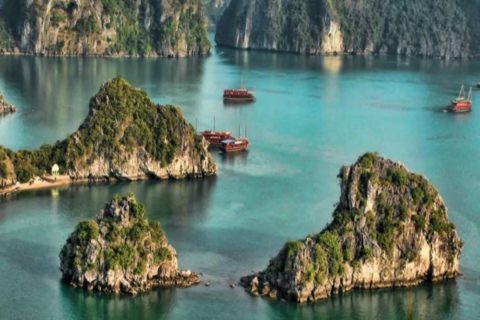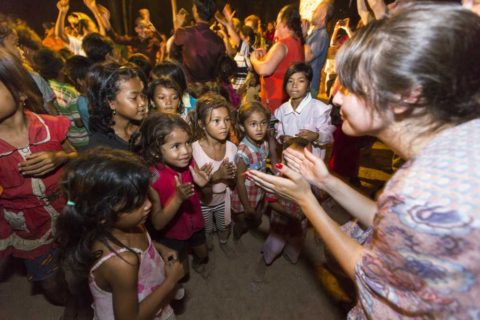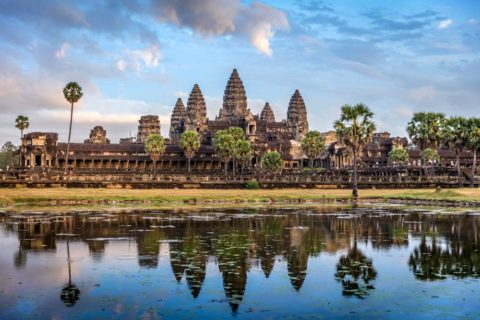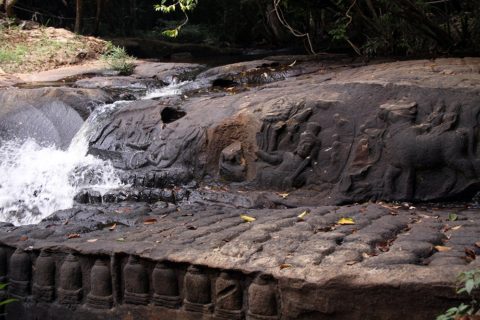This guided tour will introduce you to the cultural highlights and most famous temples in the Ancient city of Angkor. From must see attractions like the Angkor Wat to off the beaten path discoveries further afield, you’ll get the full experience of this stunning ancient marvel.
Join us a tour of the highlights of Angkor and discover the magnificence of this ancient kingdom.
| PRICE: | From |
| DURATION: | 4 Days / 3 Nights |
| TOUR STYLE: | Cultural & Heritage |
| DESTINATIONS: | Siem Reap, Angkor |
| TOUR CODE: | |
| DEPARTURES: | Daily (Private Departures) |
| STARTS: | In Siem Reap |
| ENDS: | In Siem Reap |
At a glance
Highlights
- Explore all of Angkor’s must visit temples with a local guide
- Get off the beaten path and visit lesser known monuments further afield
Itinerary in Brief
DAY 1: Arrival, Afternoon Temple Visit to Angkor
DAY 2: Visit off the beaten path temples in Angkor
DAY 3: Visit the must see monuments of Angkor
DAY 4: Departure
TOUR DETAILS
On arrival in Siem Reap, our English speaking guide will meet you at airport arrivals hall and transfer to hotel.
Afternoon tour to Preah Khan, Neak Poan and Pre Rup.
This afternoon we travel to the mighty temple of Preah Khan or ‘Sacred Sword’, built by King Jayavarman VII in the late 12th century. Sister temple to Ta Prohm, the cruciform corridors here are impressive and there are some wonderful carvings adorning the walls, including the spectacular hall of dancers. Look out for the curious two-storey structure that is almost Grecian in inspiration. This is one of the few temples originally dedicated to Buddhism and Hinduism. The original eastern entrance was for Mahayana Buddhists, while the other cardinal points represented the Hindu trinity of Shiva, Vishnu and Brahma.
We then continue on to the elegant curves of Neak Poan. This petite temple is the ultimate ornamental fountain, its series of elaborate spouts including the heads of lions and elephants. Originally Neak Poan was on an island at the centre of vast baray (reservoir), known as Jayatataka or reservoir of Jaya.
We finish by experiencing sunset over the rice fields from the royal crematorium of Pre Rup, a classic view of the Cambodian countryside.



Early morning visit of Ta Prohm & Takeo.
We rise early to travel to Ta Prohm in the morning. Ta Prohm has been abandoned to the elements, a reminder that while empires rise and fall, the riotous power of nature marches on, oblivious to the dramas of human history. Left as it was ‘discovered’ by French explorer Henri Mouhout in 1860, the tentacle-like tree roots here are slowly strangling the surviving stones, man first conquering nature to create, nature later conquering man to destroy. After soaking up the unique atmosphere of Ta Prohm, we continue to the giant pyramid of Takeo, one of the highest temples in the Angkor area. Built at the end of the 10th century, it was never completed. Some scholars contend this was due to an inauspicious lightning strike during construction. Others have suggested the high quality sandstone was simply too hard to carve in detail. This morning we also visit the remains of an old Angkorian bridge which once spanned the Siem Reap river. Like the Romans before them, the Khmer kings built long, straight roads connecting the outposts of their empire and these included many magnificent bridges. There is also the option to visit the smaller temples of Chau Sey Devada and Thommanon for avid temple enthusiasts.
Afternoon visit Banteay Samre, Landmine Museum and Banteay Srey.
We travel through the traditional village of Preah Dak to the 12th century temple of Banteay Samre. Built by King Suryavarman II, the genius behind Angkor Wat, this temple has been extensively restored. The temple is unique in that over-quarrying of sandstone led to the use of laterite for the roofed corridors. The pediments above the inner doors here include some of the most accomplished carving from the Angkor period.
We continue to visit the Cambodia Landmine Museum to learn more about the scourge of landmines and the shadow they cast over rural communities in Cambodia with a visit to this flagship museum promoting mine awareness and education.
The Land Mine Museum displays a large collection of weapons of war, including guns, rifles, rocket launchers, mortars, bombs and landmines. The site includes a mocked up minefield and visitors can attempt to locate the deactivated mines. The museum is a rich resource of information about landmines and UXO with many educational displays detailing how certain mines are used and in what situations. There is also a DVD available telling the story of landmines and UXO in Cambodia and the disastrous impact they have had on the population. Not only a weapon of war, they are a weapon against peace. The Landmine Museum promotes land mine accident prevention awareness and public education; and provides educational facilities, programming and rehabilitation facilities for survivors of land mine injuries. It also provides education and support for dozens of at-risk, land mine-affected children who have suffered overwhelming hardships. The Cambodia Landmine Museum was created so that it might serve as a place of healing for bodies, hearts and minds.
We continue further north to Banteay Srei, Angkor’s ultimate art gallery. This petite pink temple is the jewel in the crown of Angkor-era sculpture. The elaborate carvings here are the finest found in Cambodia and the name translates as ‘Fortress of the Women’, thanks to the intricate detail here, considered too fine for the hands of a man. Originally believed to date from the latter part of the Angkor period, inscriptions at the site suggest it was built by a Brahman in 967. However, some architectural historians have suggested that the inscriptions may date from an earlier structure on this site and the temple is in fact later, marking a high-water mark in Khmer sculpture.



Full day visit Angkor Wat, Angkor Thom & Bayon.
Rising at the crack of dawn, we journey out to the Mother of all temples, Angkor Wat. Believed to be the world’s largest religious building, this temple is the perfect fusion of symbolism and symmetry and a source of pride and strength to all Khmers. Built in the 12th century by King Suryavarman II, this is most famous temple at Angkor. We stay at Angkor Wat to enjoy a picnic breakfast. As the crowds return to their hotels, we venture into Angkor Wat to enjoy its magnificence in peace and quiet. We begin by unraveling the mysteries of the bas-reliefs that tell of tales from Hindu mythology and of the glories of the Khmer empire. Stretching for almost one kilometre, these intricate carvings are a candidate for the world’s longest unbroken piece of art.
Following in the footsteps of the devout and the destructive before us, we then continue to the upper levels of the inner sanctuary. The final steps to the upper terrace of Angkor are the steepest of all, as pilgrims of old were to stoop on their pilgrimage to encounter the Gods. Finally the pinnacle, the sacred heart of Angkor Wat, a blend of spirituality and symmetry so perfect that few moments will measure up.
In the afternoon, we visit the immense walled city Angkor Thom that was the masterpiece of King Jayavarman VII. Following the occupation of Angkor by the Chams from 1177 to 1181, the new king decided to build an impregnable fortress at the heart of his empire. The scale is simply staggering and we are immediately overwhelmed by the audacity of Jayavarman on arrival at the city’s gates. The causeway is lined by an intricate bridge depicting the Churning of the Ocean of Milk from Hindu mythology in which the devas (gods) and asuras (devils) play tug of war with a naga (seven-headed serpent) to obtain the elixir of immortality. We begin our visit at the Terrace of the Leper King. This intricately carved platform was the royal crematorium and the statue that was originally thought to be the leper king is now believed to be Yama, the god of death. We continue along the Terrace of Elephants, originally used as a viewing gallery for the king to preside over parades, performances and traditional sports. At the southern end lies the Baphuon, once of the most beautiful temples at Angkor, dating from the reign of Uditayavarman 1 in the 11th century. It has undergone a massive renovation by the French and is now once again open for viewing. Our climax is the enigmatic and enchanting temple of the Bayon. At the exact centre of Angkor Thom, this is an eccentric expression of the creative genius and inflated ego of Cambodia’s most celebrated king. Its 54 towers are each topped off with the four faces of Avalokiteshvara (Buddha of Compassion), which bear more than a passing resemblance to the king himself. These colossal heads stare down from every side, exuding power and control with a hint of compassion, just the mix required to keep a hold on such a vast empire. Before clambering upwards, we unravel the mysteries of the bas-reliefs, with their intricate scenes of ancient battles against the Chams and their snapshot of daily life during the Angkor period.



Enjoy free time until we transfer to airport for your onward international flight.
VIEW TOUR MAP, LODGING & OTHER OPTIONS
(Opens a new window for e-itinerary)
What's Included
- All sightseeing and transfer services as detailed in our itinerary
- English speaking guide (local guide, one guide one place)
- All entrance fees as detailed in our itinerary
- Ground transportation in private A/C vehicle
- 2 bottles of water and 2 refreshing towels per person on full day excursions
- All permissions and local taxes
What's Not Included
- Tour services not detailed in our itinerary
- All meals not specified and no drinks except complimentary water
- Visa for Cambodia (Visa issued on arrival, USD30/pax, please bring 1 passport photo)
- Arrival/Departure flight to Cambodia
- Banking fees
- Early Hotel check-in
- Expenditure of a personal nature
- Tips and gratuities
Meet Jan our Cambodia Expert
Contact Jan to book this trip or to customise the trip in any way you like. We’re here to help.
WHAT OUR CLIENTS ARE SAYING
About This Tour
DON’T FORGET TO CHECK OUT
Related Tours
CAMBODIA NATURE DISCOVERY 14D/13N
This guided tour will focus on unique natural wonders of Cambodia, from pristine jungle trails to endless lowlands with rare and protected mammals and birds, as well as introduce you to the...
KOH RUSSEY ALILA EXTENSION 4D/3NT
This guided tour will introduce you to the cultural highlights and most famous temples in the Ancient city of Angkor as well as a special focus on bird watching in the surroundings of this...
KOH RONG ROYAL SANDS EXTENSION 4D/3NT
This guided tour will introduce you to the cultural highlights and most famous temples in the Ancient city of Angkor as well as a special focus on bird watching in the surroundings of this...
SONG SAA PRIVATE ISLAND EXTENSION 4D/3NT
This guided tour will introduce you to the cultural highlights and most famous temples in the Ancient city of Angkor as well as a special focus on bird watching in the surroundings of this...
SIX SENSES KRABEY ISLAND EXTENSION 4D/3NT
This guided tour will introduce you to the cultural highlights and most famous temples in the Ancient city of Angkor as well as a special focus on bird watching in the surroundings of this...
CAMBODIA LOCAL LIFESTYLE
This guided tour will introduce you to the cultural highlights and most famous temples in the Ancient city of Angkor as well as a special focus on bird watching in the surroundings of this...
KHMER KINGDOMS ACTIVE 12D
This guided tour will introduce you to the cultural highlights and most famous temples in the Ancient city of Angkor as well as a special focus on bird watching in the surroundings of this...
SIEM REAP, PHNOM PENH & 4 RIVERS 12D/11NT
This guided tour will introduce you to the cultural highlights and most famous temples in the Ancient city of Angkor as well as a special focus on bird watching in the surroundings of this...
CAMBODIA EXPLORER 16D/15NT
Grand journey through Cambodia covering the most scenic temples - on and off the beaten trails - combined with wildlife watching, conservation project visits, jungle walks, mingling with local...
MEKONG “JAHAN/ JAYAVARMAN CRUISE” 8D/7NT
This guided tour will introduce you to the cultural highlights and most famous temples in the Ancient city of Angkor as well as a special focus on bird watching in the surroundings of this...
THE HIDDEN TREASURES OF CAMBODIA 12D/11NT
This guided tour will introduce you to the cultural highlights and most famous temples in the Ancient city of Angkor as well as a special focus on bird watching in the surroundings of this...
BATTAMBANG EXTENSION 3D/2NT
This guided tour will introduce you to the cultural highlights and most famous temples in the Ancient city of Angkor as well as a special focus on bird watching in the surroundings of this...
